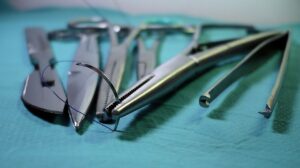Marfan Syndrome
What is Marfan syndrome?
Marfan syndrome is an inherited disorder that affects the connective tissues in the body, which are the fibers that support and anchor the organs and other structures in the body, most commonly, the heart, eyes, blood vessels, and skeleton. Because of this nature of the disease, the biggest threat of Marfan syndrome is damage to the aorta.What causes Marfan syndrome?
Marfan syndrome is caused by a defect in a gene that enables the body to produce a protein that helps give the connective tissue its elasticity and strength. This abnormal gene is inherited from a parent who has the disorder, but in some cases, the new mutation can develop spontaneously in a patient. There are no additional risk factors for developing Marfan syndrome.What are the symptoms of Marfan syndrome?
The signs and symptoms of Marfan syndrome vary greatly, from mild to life-threatening, even among patients in the same family. The characteristic features of Marfan syndrome include:- Tall and slender build
- Disproportionately long arms, legs, and fingers
- Protruding or dipping breastbone
- High, arched palate and crowded teeth
- Heart murmurs
- Extreme nearsightedness and other eye complications
- Abnormally curved spine
- Flat feet
How is Marfan syndrome diagnosed?
An echocardiogram is one of the first tests that a healthcare provider will conduct to check the condition and size of the heart valves. In addition to this, CT scans, MRI scans, and eye tests may also be done to evaluate the patient’s overall condition. If further confirmation of Marfan syndrome is needed, genetic testing can be done.What are the available treatments for Marfan syndrome?
Because there is no cure for Marfan syndrome, treatment focuses on preventing the various complications of the disease. These symptomatic and supportive treatment options include:- Blood pressure lowering drugs, such as beta blockers or Losartan (Cozaar)
- Glasses or contact lenses for dislocated eye lens
- Surgery, such as aortic repair or breastbone corrections
- Back braces for scoliosis
Where can I find out more about Marfan syndrome?
Marfan Syndrome Articles


Help Raise Funds for this Girl with Marfan Syndrome to Receive Open-Heart Surgery in London
Jessica Lynn
March 20, 2023
Read More »



Girl with Marfan Syndrome Named IWK Founders Club Ambassador
Jessica Lynn
March 14, 2022
Read More »



Ride for Their Lives: Biking to Fight Against Climate Change
Kendall Mason
October 27, 2021
Read More »






